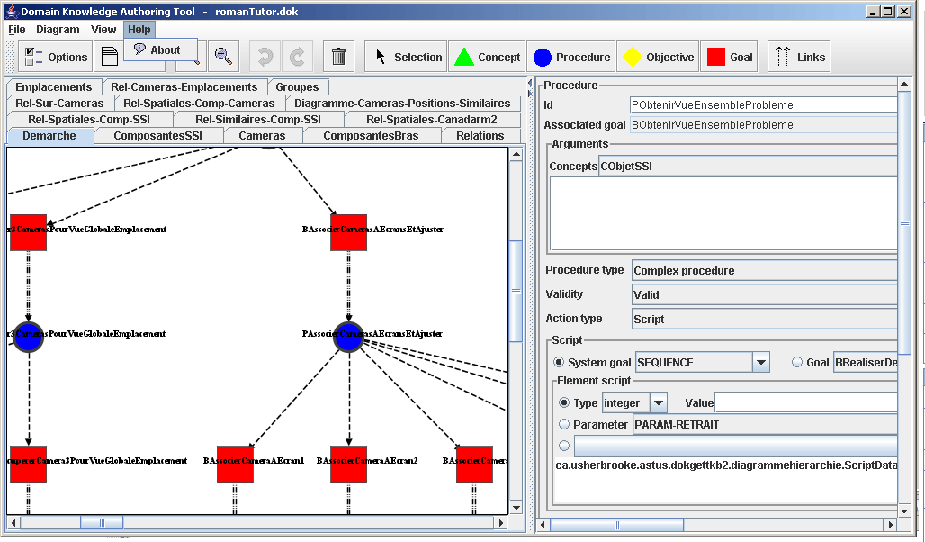Dokgett
Introduction
Dokgett is a graphical autoring tool developped at the ASTUS lab (U. of Sherbrooke), written entirely in Java. I here describe the latest version that I have worked on during my M.Sc. and Ph.D.
Dokgett allows to visually design cognitive models. Its interface shown below comprises two main parts. The left part allow to add knowledge components (concepts, procedures and goals) and to connect them together visually. The right part allows to edit the properties of the selected knowledge component.

The software has several menus offering advanced options. Here is a screen capture of the menus.

The files that are generated by Dokgett are named DOK/SPK. They are read by an interpreter that I have developped to "execute" cognitive models [1, 3]. To get more information about this interpreter and the theoritical foundations of the cognitive model click here.
Articles
I have applied the latest version of the Dokgett authoring tool in these publications:
| [1] | Fournier-Viger, P., Nkambou, R. & Mayers, A. (2008). Evaluating Spatial Representations and Skills in a Simulator-Based Tutoring System. IEEE Transactions on Learning Technologies, vol. 1, no. 1, pp. 63-74, Jan-Mar, 2008. |
| [2] | Fournier-Viger, P., Nkambou, R. & Mayers, A. (2008), Evaluating Spatial Knowledge through Problem-Solving in Virtual Learning Environments. Proceedings of the Third European Conference on Technology Enhanced Learning (EC-TEL 2008). LNCS 5192, Springer, pp 15-26. |
| [4] | Fournier-Viger P., Najjar, M., Mayers, A. & Nkambou, R. (2006). A Cognitive and Logic based Model for Building Glass-box Learning Objects. Interdisciplinary Journal of Knowledge and Learning Objects, Vol. 2. pp: 77-94. |
Acknowledgements
The work that I have done on Dokgett was made possible thanks to (1) the support from my research director and co-supervisor during my Ph.D. and M.Sc., (2) grants from the FQRNT and NSERC and (3) the work from many other researchers and students at the ASTUS lab.